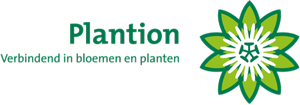Name change Pennisetum setaceum varieties
Last June, we informed that the Pennisetum setaceum varieties had definitively been added by the European Commission to the list of invasive plants.
DNA examination has shown that the following varieties are not related to Pennisetum setaceum. Their incorrect classification had threatened to have these varieties banned under the European legislation on invasive exotics.
The names of the varieties in question have been changed so they will not fall under the cultivation and marketing ban announced by the European Union. This concerns the following product codes at the VBN auctions:
| Product code | Old Product name | New Product name | |
| 51152 | Pennisetum setaceum ‘Rubrum’ | → | Pennisetum advena ‘Rubrum’ |
| 318177 | Pennisetum setaceum Red Riding Hood | → | Pennisetum advena ‘Red Riding Hood’ |
| 318967 | Pennisetum setaceum ‘Metallica’ | → | Pennisetum advena ‘Metallica’ |
| 320115 | Pennisetum setaceum ‘Sky Rocket’ | → | Pennisetum advena ‘Sky Rocket’ |
Pennisetum setaceum (product code 51151) remains banned.



